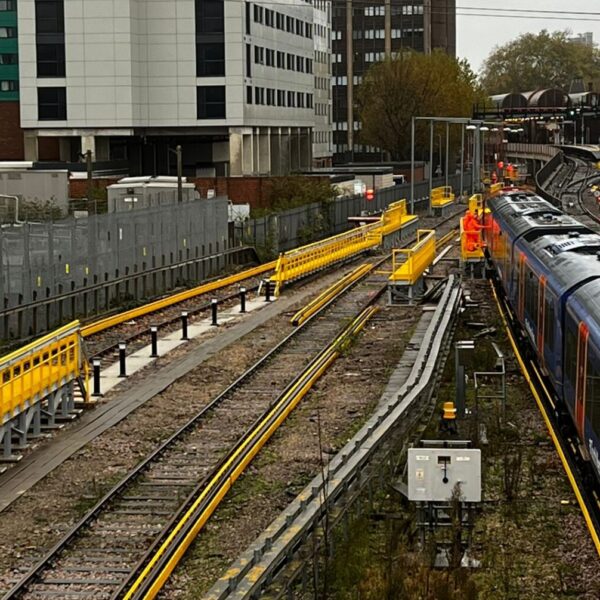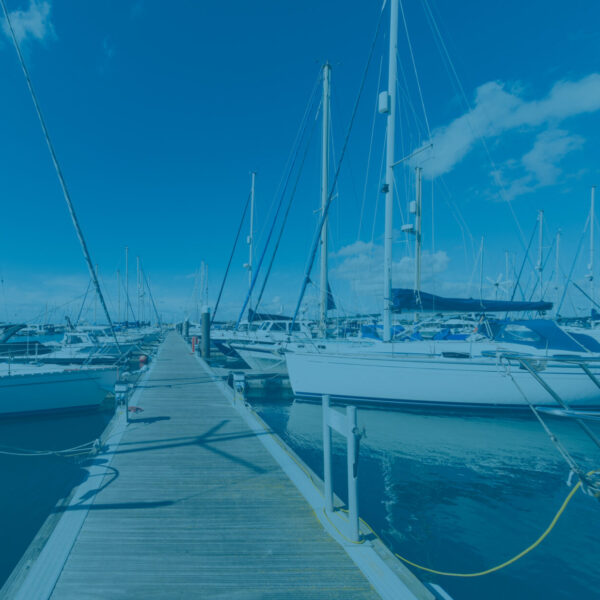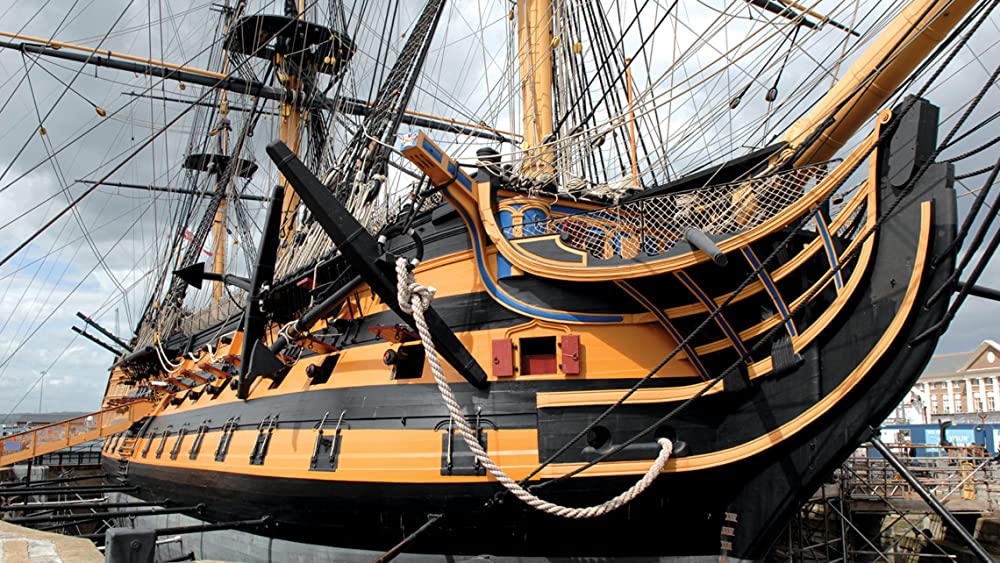
Anti-Slip Walkways on HMS Victory
We’ve been involved in some very prestigious projects over the years but supplying our QuartzGrip Anti-Slip solutions to the teams currently working on HMS Victory could well be in the top ten.
HMS Victory – a brief history
HMS Victory is a 104-gun first-rate ship of the line of the Royal Navy, ordered in 1758, laid down in 1759 and launched in 1765. She is best known for her role as Lord Nelson‘s flagship at the Battle of Trafalgar on 21 October 1805.
A team of 150 workmen were assigned to construct Victory’s frame. Around 6,000 oak trees were used in her construction, held in place by six-foot copper bolts, supported by treenails for the smaller fittings. She was floated on 7 May 1765, having cost £63,176 and 3 shillings, the equivalent of £9.19 million today.
After the Battle of Cape St Vincent in 1797, Victory was declared unfit for active service and was converted to a hospital ship to hold wounded French and Spanish prisoners of war but, in 1799, the Admiralty decided to recondition Victory. Work started in 1800, but as it proceeded, an increasing number of defects were found, and the repairs developed into a very extensive reconstruction. Extra gun ports were added and her magazine was lined with copper. The open galleries along her stern were removed; her figurehead was replaced along with her masts and the paint scheme changed from red to the black and yellow seen today. The work was completed in April 1803, and the ship left for Portsmouth the following month.
The Nelson Years
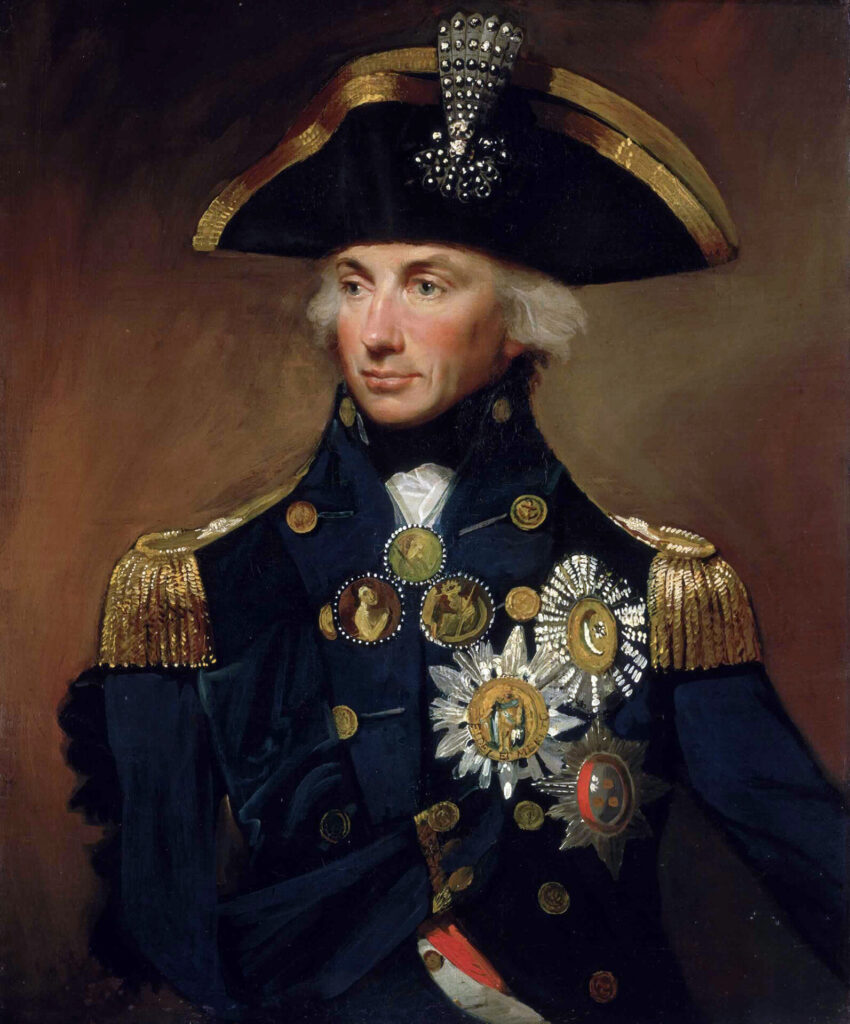
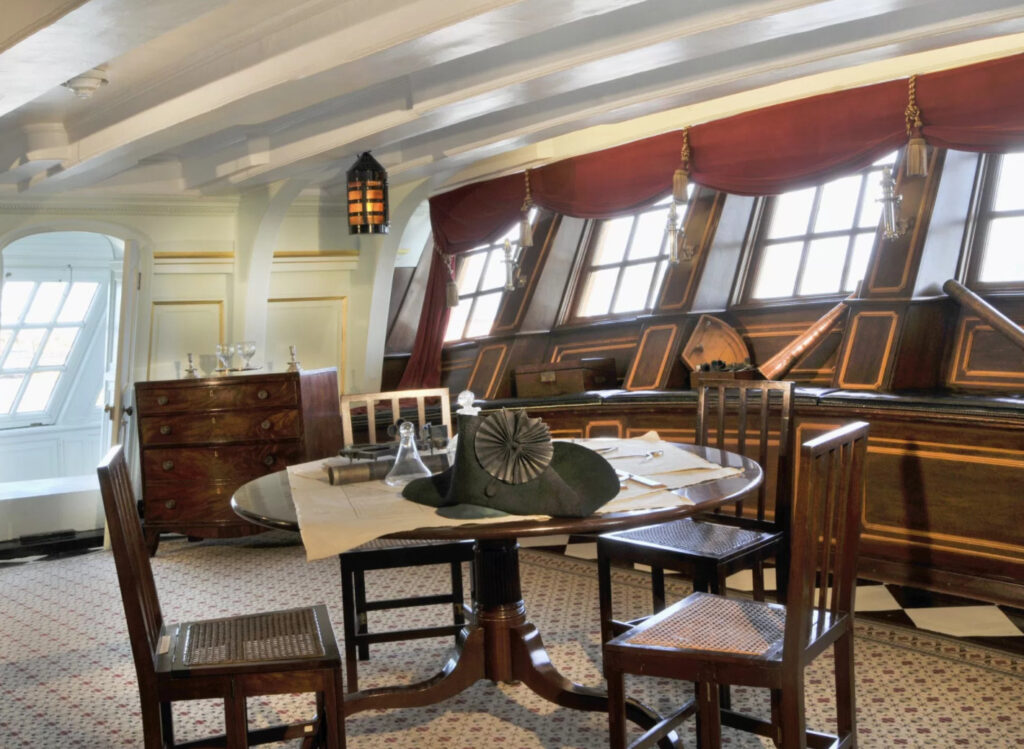
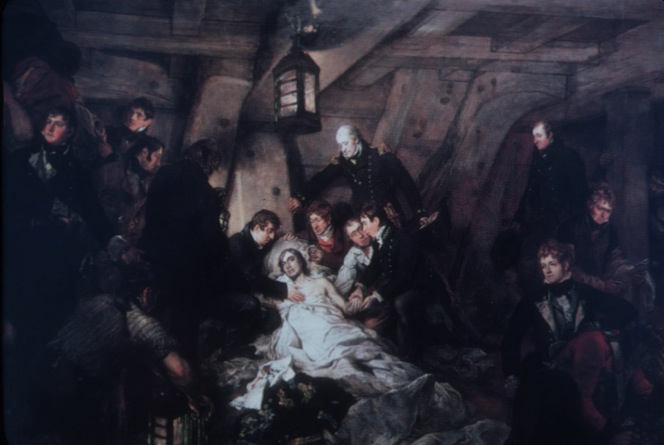
Vice-Admiral Nelson took command on 18 May 1803. On the morning of 21 October 1805 at 0600 hours, Nelson ordered his fleet to engage the French in the infamous Battle of Trafalgar. He died at half past four from a musket ball shot through his shoulder and into his spine. Victory was badly damaged in the battle and the Admiralty Board considered her too old, and in too great a disrepair, to be fully restored. In 1812 she became a prison ship.
In 1831 Victory was to be broken up and her timbers reused in other vessels but a public outcry against the destruction of so famous a ship led to the order being held in abeyance. She was left, largely forgotten with civilian visitors permitted to come aboard for tours.
Royal Interest
The ship briefly returned to the public gaze on 18 July 1833 when Princess Victoria made a visit to her quarterdeck to meet with veterans of the Trafalgar campaign. This generated a surge of interest in the vessel, and following a second visit in 1844, a further burst of interest lifted annual visitors to more than 22,000.
In 1854, Victory sprang a leak and sank. She was raised but in 1887 she sprang a catastrophic leak and was only just prevented from sinking again. The Admiralty provided a small annual subsidy for maintenance, and in 1889 Victory became the home of a signal school.
The impact of so much human traffic left her increasingly decrepit and Victory continued to deteriorate. In 1903 she was accidentally rammed. Emergency repairs prevented her from sinking, but it was again proposed that she be scrapped. It was only the intervention of Edward VII that prevented this from occurring. Interest in the ship revived in 1905 during the centenary celebrations of the Battle of Trafalgar.
Save the Victory
By 1921 the ship was in a very poor state and a public Save the Victory campaign was launched. In 1922, she was moved to a dry dock at Portsmouth and preserved as a museum ship. A survey revealed that between a third and a half of her internal fittings required replacement. Her steering equipment had also been removed or destroyed, along with most of her furnishings
In the 1950s bulkheads were removed to increase airflow and the following decade saw the replacement of much of the decayed oak with hardwoods. The decision to restore Victory to her Battle of Trafalgar configuration was taken in 1920, but this was not achieved until 2005, in time for the Trafalgar 200 celebrations.
She is the oldest commissioned warship in the world with 244 years’ service as of 2022 and attracts around 350,000 visitors per year in her role as a museum ship.
Currently shrouded in scaffolding, HMS Victory is enjoying further works to improve visitor access. Step on Safety has been privileged to be part of this work, supplying almost 100 GRP anti-slip Stair Tread Covers, 17 Landing Covers and over 800 square metres of GRP anti-slip Flat Plate to ensure the steps and walkways surrounding the ship and the visitor centre remain safe, whatever the weather.

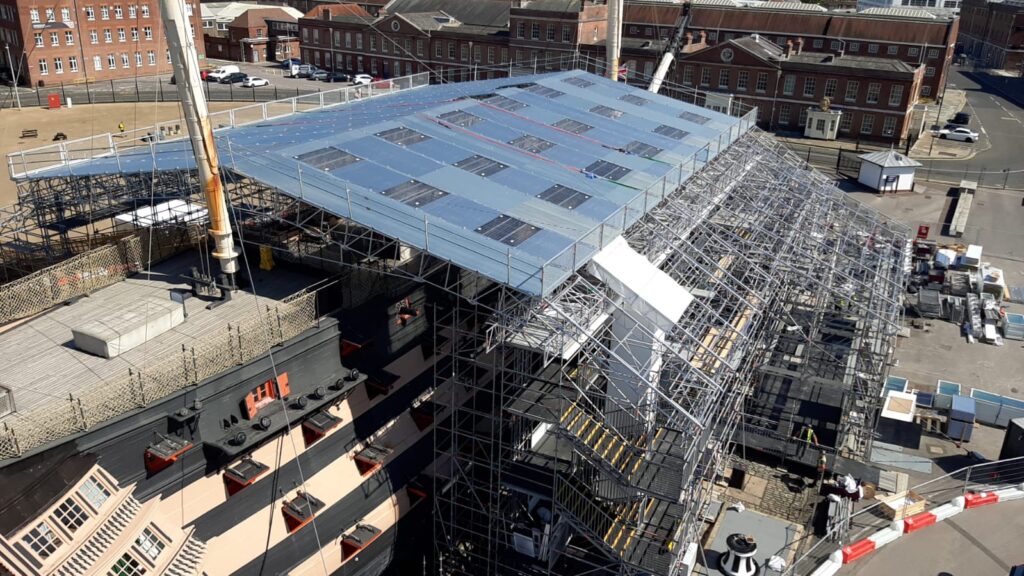
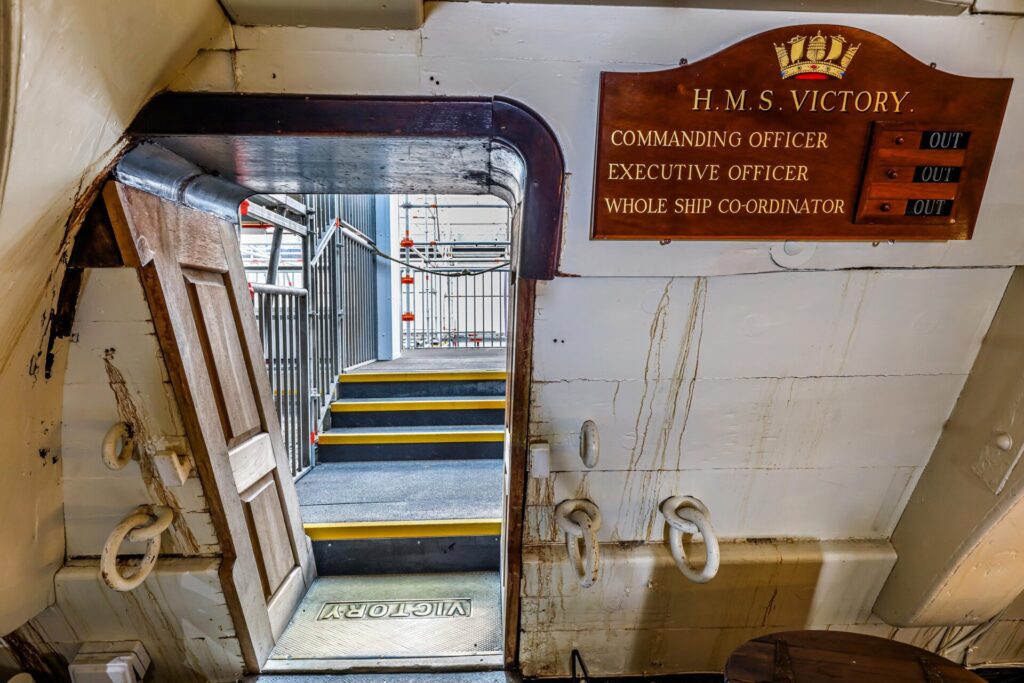
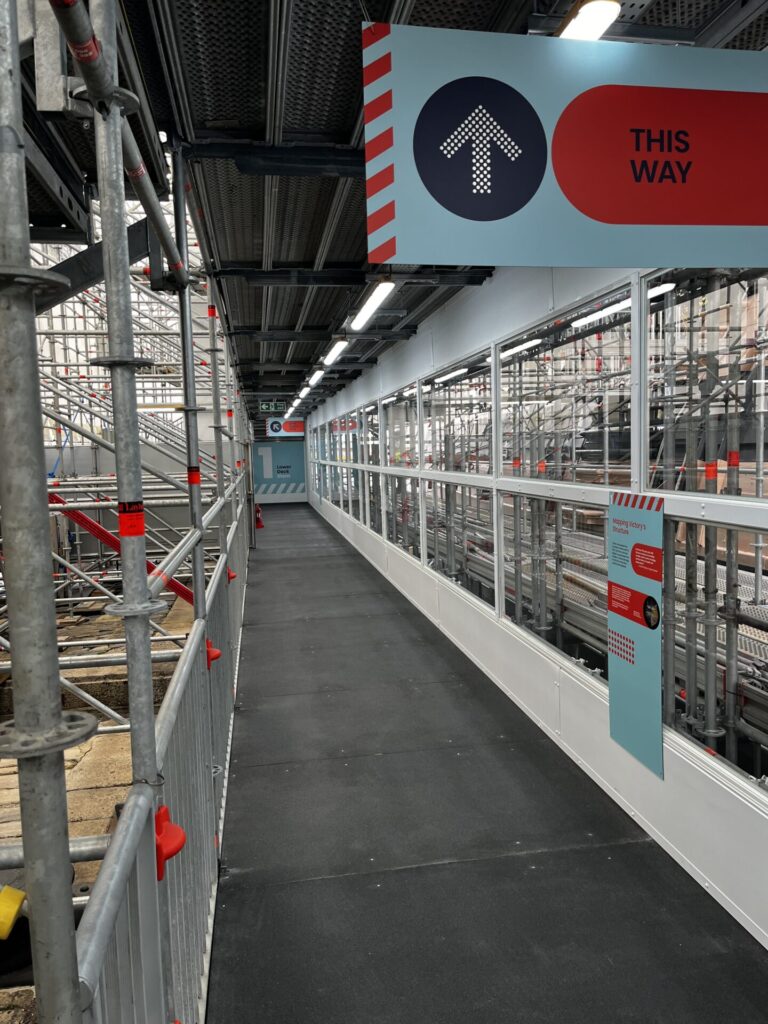
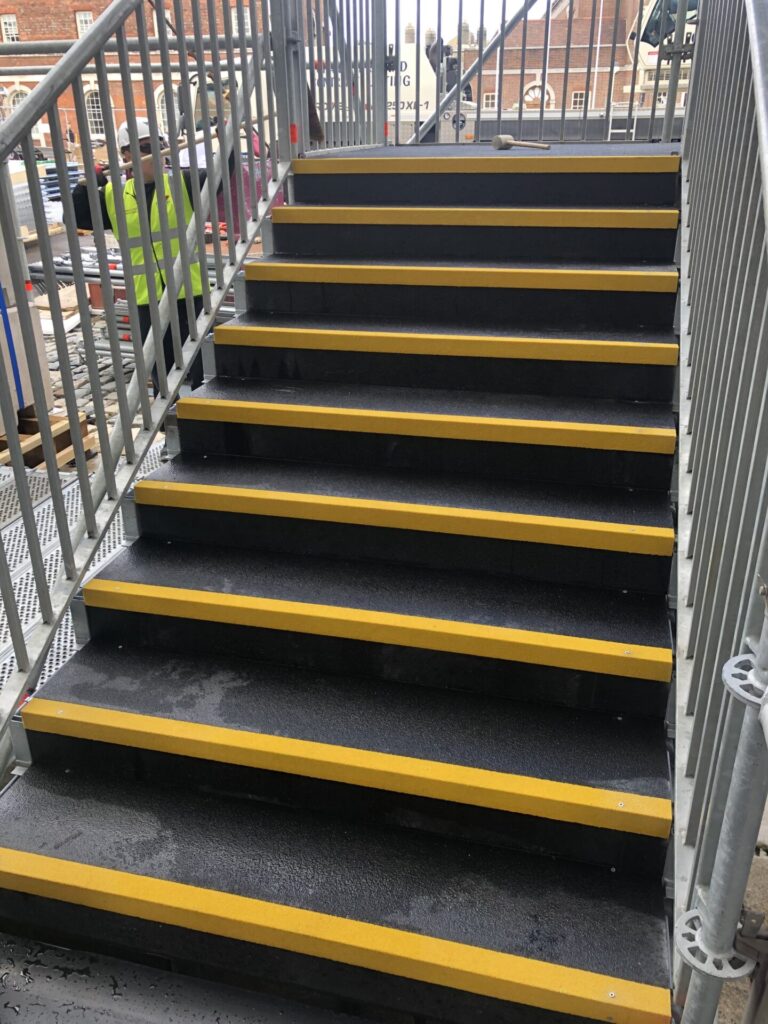
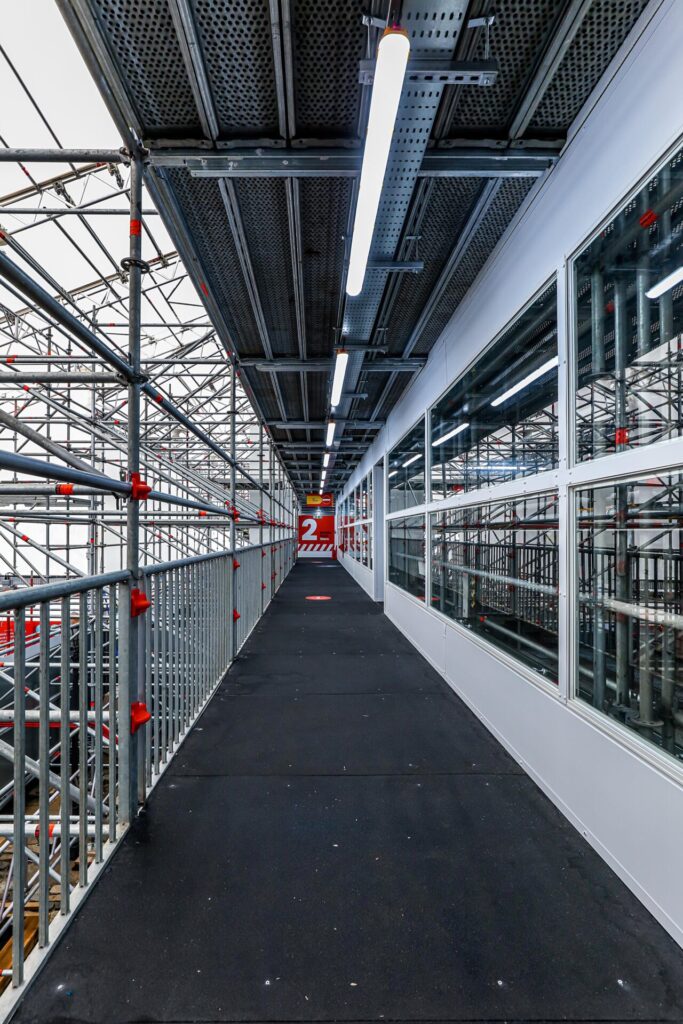
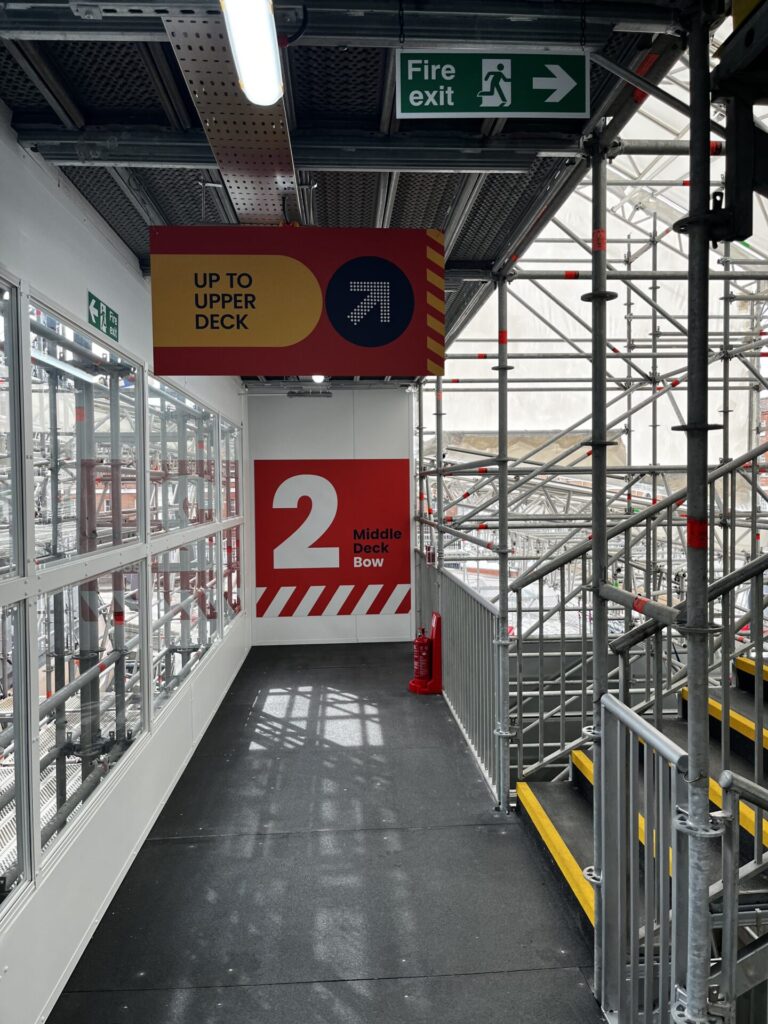
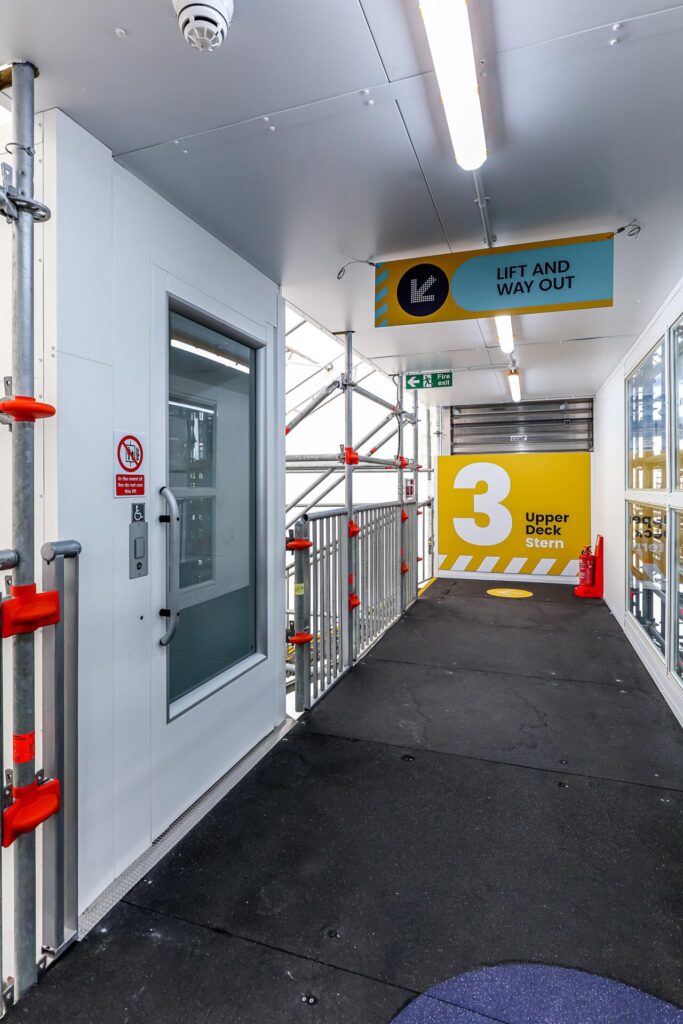
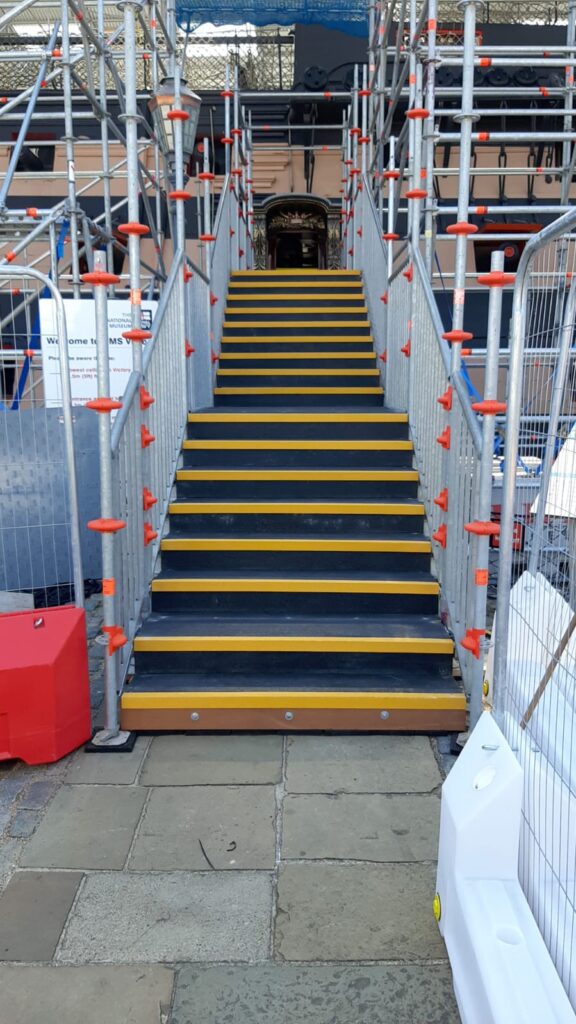
The black QuartzGrip Flat Plate and hi-vis Yellow Stair Nosing not only meets Equalities Act 2010 requirements, ensuring maximum visibility of trip hazards to visitors, it matches the distinctive black and yellow ‘Nelson Chequer’ design of the ship.
If you’d like to know more about keeping your visitors safe get in touch today.


